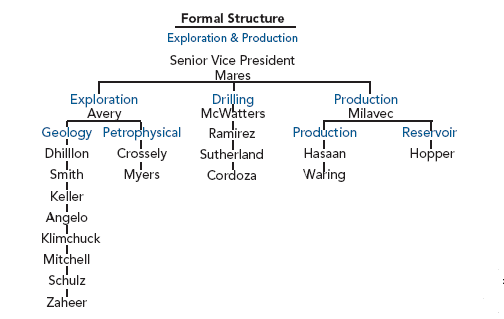Note : I decided to include some content and discussion questions on Social Network Analysis in my HR Technology Class for the first time, and as I was writing the introduction to the topic, it seemed only sensible that I post it all here as well.
------------------------------------------------------------------------------------------------------------------------------------
What is Social Network Analysis?
In the last 10 years or so scores of research papers and several books have been written on the subject of Social Network Analysis (SNA), which simply stated is the study of how information flows in organizations, with whom are employees most connected, to whom do they turn for information or advice, and identifies the roles individuals and departments play in the overall social network of the organization.
It is a way of quantifying the answers to questions like:
"When faced with a complex problem, who do you typically ask for assistance?"
"Who would you turn to when discussing a new or innovative project?"
"Who are you most confident will give you accurate and truthful information?"
Why study Social Network Analysis?
Why is Social Network Analysis important for the HR professional? To help answer that question, lets take a look at two charts.
First, the organization chart of a division of a typical company:
 Source - Saba/HCI - Tapping the Power of Social Networking to Manage Talent
Source - Saba/HCI - Tapping the Power of Social Networking to Manage Talent
And then the Social Network Analysis diagram for that same division. For example purposes, assume that this is an 'Information' network analysis. That is the connections in the diagram represent requests for information needed to perform a person's job requirements.
 Source - Saba/HCI - Tapping the Power of Social Networking to Manage Talent
Source - Saba/HCI - Tapping the Power of Social Networking to Manage Talent
The key conclusion from the analysis of the SNA diagram is that while employee Mitchell occupies a relatively low position on the 'official' organization chart, she is central and highly connected in the SNA diagram. Many, many employees turn to her for information in the course of performing their jobs. Generally speaking, Mitchell is more more crucial to the overall efficiency and operations of the organization than say, Avery who is higher up on the organization chart, but on the periphery of the SNA diagram. This is just one, really simple example of the value and insight that you can gain from Social Network Analysis, but even this simple example is powerful, and helps illustrate the importance of SNA to the organization.
How can HR leverage Social Network Analysis?
There are several important aspects of Social Network Analysis that can be leveraged by Human Resources departments.
1. Organizational Design - If the SNA reveals a lack of communication and information flow due to too strict adherence on formal organizational hierarchy, some re-design may be in order to try and help facilitate more cross-organization communication
2. Succession Planning - SNA can assist tremendously in the identification of key employees, ones that either have a central, highly connected role in the network, or that serve as the primary or only 'connector' between different departments or offices. HR would likely want to take steps to insure that an adequate succession strategy is in place for these individuals, who are not necessarily 'high' on the official organization chart.
3. Job Description modification - sometimes SNA reveals certain individuals are 'too connected', meaning there are far too many demands on their time, and too many other folks in the organization looking for their insights. Many times this leads to bottlenecks, that can disrupt the flow of information and ultimately detract from productivity. If this situation occurs, HR can assist in an intervention to modify the position roles and responsibilities, removing or re-aligning certain duties to promote a better balance, and hopefully reduce the information bottlenecks.
4. Training and Development - SNA can help identify and analyze the makeup of the networks of the organization's top performers. It could be that the structure or patterns of high-performer networks could be replicated to others in the organization, potentially leading to increased overall personal and network effectiveness. HR can be instrumental in developing learning opportunities to help educate the workforce on these approaches that top performers utilize.
5. Internal Social Networking technology - Conducting a thorough SNA for an organization typically reveals areas that need improvement, either a need to increase collaboration and communication overall, desire for better inter-departmental processes, or more widespread organizational changes. Internal or corporate social networking technology is one tool that can be brought to bear to attempt to address these challenges. Platforms ranging from internal microblogging, blogging, wikis, activity streaming, or more robust platforms that encompass all of these functions are becoming more common in organizations, and HR departments, armed with information from the SNA, should be in an excellent position to drive these efforts.
Additional Resources
If you are interested in reading more on Social Network Analysis, I recommend the following two books
The Hidden Power of Social Networks - Rob Cross and Andrew Parker
Driving Results Through Social Networks - Rob Cross and Robert Thomas
In addition, Jon Ingham at the Strategic HCM blog and Mark Bennett at Talented Apps frequently write on these topics.
The topic of Social Network Analysis, while not exactly new, is getting more and more attention, and new tools and technologies to assess and improve internal networks are emerging all the time. It is an important area for the HR leader of today to become more familiar with, and to leverage in their quest to improve organizational performance.